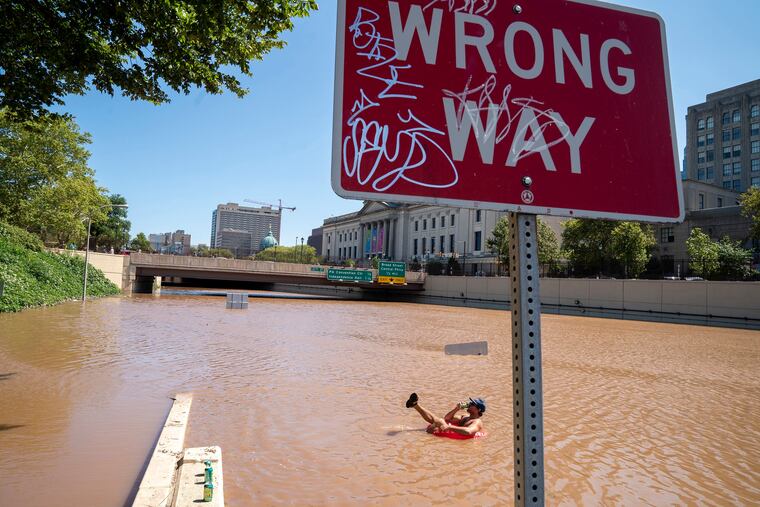Tackling Philly’s high energy burden can help shore up against storms | Opinion
Philadelphia experiences energy burdens 86% higher than the national average.

The Vine Street Expressway was never meant to be a canal. And while the images of people tubing and diving in it after the flooding may be among the most famous sights from the wreckage, we cannot forget the devastation caused by Hurricane Ida.
The hurricane brought strong winds, several tornadoes, and heavy rain to Philadelphia, resulting in at least four deaths and catastrophic flooding. People suffered damages to their homes and businesses that will take months to repair.
We must protect the city from more horrific weather events. On a local and state level, mitigating the ravishing effects of climate change can start with acknowledging the astronomical energy burden in our city.
» READ MORE: Practical steps to cut the biggest parts of home energy use
Energy burden is the percentage of household income that is spent on energy bills, and Philadelphia experiences energy burdens 86% higher than the national average.
This creates not just an environmental burden on our city residents, but an economic one as well. And it’s something that can be reduced with better policies at the local and state level.
As a good first step, last month, despite GOP pushback, Pennsylvania’s Independent Regulatory Review Commission finally moved to join the Regional Greenhouse Gas Initiative (RGGI), a collaboration among nearly a dozen neighboring states. RGGI states use revenues derived from the carbon-reduction program to reinvest in their economies and in further pollution reductions via energy efficiency, renewables, energy bill assistance, and other climate strategies. This should help reduce costs and energy burden over the long term by moving us over to cleaner energy.
But we can also see the effects of crumbling infrastructure deteriorated by the changing climate and in desperate need of upgrades and weatherization. Just in July, two separate water mains ruptured in Philadelphia, sending thousands of gallons of water into streets and homes and creating massive sinkholes and property damage.
Infrastructure improvements like weatherization against water and energy leaks make the whole city, including buildings and power systems, more durable.
» READ MORE: In the wake of Ida’s destruction, Philly needs lifesaving water resilience | Opinion
We should also be looking at planting more trees to provide cooling, energy-efficient development standards to ensure new buildings are not contributing to the burden, and wastewater treatment plant upgrades to handle more runoff and increase the life of existing infrastructure.
As our summers are getting hotter, we need to ask the Department of Human Services to expand the Low Income Home Energy Assistance Program (LIHEAP) for year-round funding to assist with home energy bills, energy crises, weatherization, and energy-related minor home repairs.
Sustainable union jobs like weatherization and solarization boost the economy while reducing costs to homeowners and taxpayers.
A robust plan focusing on energy burden addresses ways to stall global warming, save taxpayers money, and shore up our city and state from inevitably increasing weather events.
Good use of funds and programs would allow us to be proactive, not reactive, which is both economically and environmentally prudent and necessary for a competitive economy, better quality of life, and thriving neighborhoods.
Deja Alvarez is a Democratic candidate for state representative in Pennsylvania’s 182nd District (Philadelphia), has more than a decade of experience in the nonprofit and public health fields, and is committed to building on progressive values, economic recovery, and historic LGBTQ representation in Harrisburg. @dejaforpa